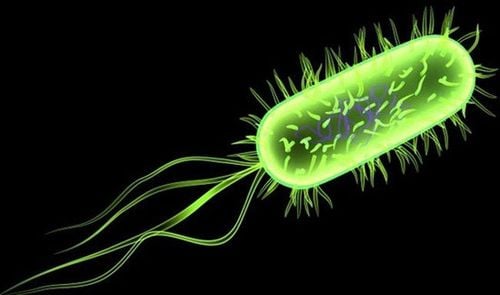This is an automatically translated article.
Listeria bacteria has the ability to survive for a long time in the natural environment and in some foods, so if you are not hygienic when eating, there is a high risk of food poisoning due to listeria bacteria.1. Listeria bacteria overview
Listeria monocytogenes is a gram-positive, facultative anaerobic, motile, bacteria that do not secrete exotoxins but endotoxins that cause necrosis. The organism grows at a temperature of 1oC - 45oC, preferably around 45oC and at pH: 6-8, so it can survive for a long time in the environment, they are killed by pasteurization and cooking. . It occurs widely in the wild in soil, manure, animals, spoiled vegetables, sewage, milk, cheese and some unsanitary canned foods. Listeria bacteria present in unsanitary food sources is a cause of dangerous food poisoning.Pathogenicity of listeria monocytogenes:
Bacteria after entering the body if through the digestive tract: Can cause disease in the gastrointestinal tract or not only cause disease in the gastrointestinal tract but also invade the body enter the bloodstream causing bacteremia or spread to the central nervous system causing meningitis, severe cases are common in people with weakened immune systems. In pregnant women, the disease can be transmitted to the fetus, causing miscarriage, stillbirth, premature birth, or neonatal sepsis, meningitis 1 to 4 weeks after birth. Path of disease: Listeria bacteria can be transmitted through the following ways
Through eating: When eating food contaminated with bacteria, food poisoning. Transmission from mother to child through the placenta or during childbirth. In healthy people, even a small amount of food containing listeria bacteria may not become infected, but in high-risk subjects even small amounts of listeria in food can cause illness. .
Pregnant women and newborns Elderly people over 65 years old People with natural or acquired immunodeficiency diseases People with cancer, diabetes, or kidney disease

Vi khuẩn sau khi xâm nhập vào cơ thể nếu qua đường tiêu hóa
2. Manifestations of listeria infection
Symptoms often begin after eating contaminated food a few days, up to a few weeks, sometimes months. Symptoms include:Common: Fever, diarrhea, nausea, vomiting, muscle aches, fatigue, sometimes chills, or flu-like symptoms may appear. Pregnant women often only have flu-like symptoms, but pregnancy can lead to miscarriage, stillbirth, premature birth or life-threatening newborn baby. If meningitis: Headache, stiff neck, loss of balance, possibly convulsions. Sepsis: Patients present with high fever, chills or hypothermia, arrhythmia, hypotension, shortness of breath... It is a dangerous case with high mortality rate.
3. How is listeria infection treated?
3.1 Symptomatic treatmentPain relievers and antipyretics: Commonly used is paracetamol or ibuprofen, which has antipyretic and muscle pain relief effects. Rehydration of water and electrolytes: Drink oresol as needed, increase the intake of green vegetables and fruits. Active treatment against cardiovascular collapse, dialysis if severe sepsis causes kidney failure. 3.2 Treat the cause
Antibiotic treatment is recommended as soon as possible, in order to limit the risk of complications.

Phụ nữ mang thai cũng thường chỉ xuất hiện các triệu chứng giống như cảm cúm
4. Prevention of diseases caused by listeria
Eat cooked foods to prevent food poisoning. Clean body, wash hands after going to the toilet, after coming into contact with microorganisms and before eating. Avoid using all unpasteurized dairy products, perform pasteurization of all dairy products. Do not store food in the refrigerator for too long, always keep the inside of the refrigerator clean, ensure a stable food storage temperature, because listeria bacteria can grow and multiply slowly in the refrigerator. Avoid using untreated fresh manure to fertilize vegetables, raw vegetables must be washed thoroughly before eating. Comply with food safety guidelines. Cattle breeders should be careful when dealing with dead or sick animals. Need to clean the body after contact with animals. People at high risk for Listeria infection should not eat foods with a high risk of contamination such as: pates, sausages, canned meat, cold or smoked meats, or fermented or dried sausages . If eating, must be re-cooked at high temperature before eating. Form the habit of carefully reading the shelf life and storage of canned foods. There is currently no vaccine to prevent the disease, so following a food-safe diet and having the habit of reading the expiration date of food, especially those at high risk of disease, is an effective measure. disease prevention.If you have unusual symptoms, you should be examined and consulted with a specialist.
Please dial HOTLINE for more information or register for an appointment HERE. Download MyVinmec app to make appointments faster and to manage your bookings easily.
MORE:
Risk of spread of Whitmore's disease More people with Whitmore's disease - precautions to avoid Distinguishing "flesh-eating bacteria" from the bacteria that cause Whitmore's disease













